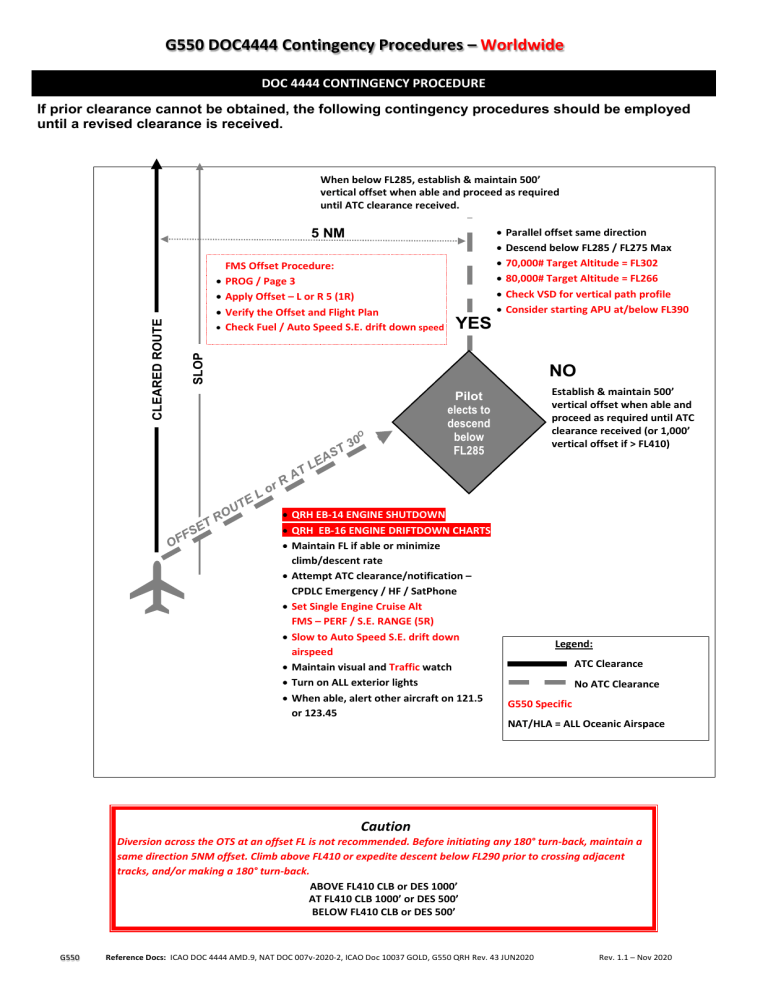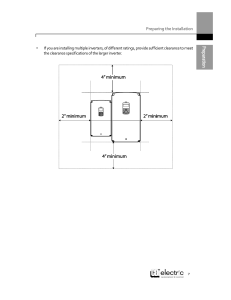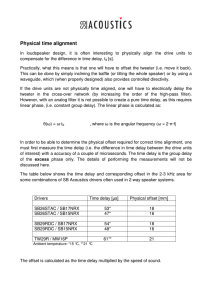
G550 DOC4444 Contingency Procedures – Worldwide DOC 4444 CONTINGENCY PROCEDURE If prior clearance cannot be obtained, the following contingency procedures should be employed until a revised clearance is received. When below FL285, establish & maintain 500’ vertical offset when able and proceed as required until ATC clearance received. FMS Offset Procedure: • PROG / Page 3 • Apply Offset – L or R 5 (1R) • Verify the Offset and Flight Plan • Check Fuel / Auto Speed S.E. drift down speed YES • Parallel offset same direction • Descend below FL285 / FL275 Max • 70,000# Target Altitude = FL302 • 80,000# Target Altitude = FL266 • Check VSD for vertical path profile • Consider starting APU at/below FL390 SLOP CLEARED ROUTE 5 NM NO Establish & maintain 500’ vertical offset when able and proceed as required until ATC clearance received (or 1,000’ vertical offset if > FL410) Pilot elects to descend below FL285 • QRH EB-14 ENGINE SHUTDOWN • QRH EB-16 ENGINE DRIFTDOWN CHARTS • Maintain FL if able or minimize climb/descent rate • Attempt ATC clearance/notification – CPDLC Emergency / HF / SatPhone • Set Single Engine Cruise Alt FMS – PERF / S.E. RANGE (5R) • Slow to Auto Speed S.E. drift down airspeed • Maintain visual and Traffic watch • Turn on ALL exterior lights • When able, alert other aircraft on 121.5 or 123.45 Legend: ATC Clearance No ATC Clearance G550 Specific NAT/HLA = ALL Oceanic Airspace Caution Diversion across the OTS at an offset FL is not recommended. Before initiating any 180° turn-back, maintain a same direction 5NM offset. Climb above FL410 or expedite descent below FL290 prior to crossing adjacent tracks, and/or making a 180° turn-back. ABOVE FL410 CLB or DES 1000’ AT FL410 CLB 1000’ or DES 500’ BELOW FL410 CLB or DES 500’ G550 Reference Docs: ICAO DOC 4444 AMD.9, NAT DOC 007v-2020-2, ICAO Doc 10037 GOLD, G550 QRH Rev. 43 JUN2020 Rev. 1.1 – Nov 2020 G550 DOC4444 Contingency Procedures – Worldwide OTS DIVERSION: ACROSS PRIMARY TFC FLOW If drifting down or descending, DO NOT cross tracks until level at an appropriate altitude for crossing tracks. Maintain established offset and expedite Climb above or Descend below the OTS (NAT HLA = FL420-285). Utilize one of the previous procedures until clear of the organized track system. 1. Advise ATC when time permits – Turn on all exterior lights 2. Confirm you are level at an appropriate Offset Altitude ABOVE FL410 CLB or DES 1000’ AT FL410 DES 500’ or CLB 1000’ BELOW FL410 CLB or DES 500’ 3. Request a clearance and proceed to alternate airport as per your re-clearance, or direct if unable to obtain a clearance. 4. Check Fuel & Determine appropriate speed 5. Maintain extra vigilance for traffic 6. Broadcast FL & Position to nearby traffic on 121.5/123.45 ALWAYS COMPLETE ALL APPLICABLE CHECKLISTS FOR ANY SITUATION OTS: RETURN & OFFSET Before initiating any 180° turn-back, consider maintaining a same direction 5NM offset. Expedite climb above or descend below the majority of NAT/HLA or other OTS traffic FL410-290 prior to crossing adjacent tracks or making a 180° turn-back. 1. Advise ATC when time permits – Turn on all exterior lights 2. Determine which way to turn (Consider OTS, Traffic, WX, Turn towards alternate airport) 3. Once established on the 5NM offset, expedite climb above or descend below NAT HLA airspace (FL285-FL420) 4. Turn Left or Right as required 180° to 225° from present course to intercept and re-establish on the offset course Allow 20nm for 180° course reversal NOTE: The FMS Offset procedure for a course reversal assumes you have inserted a contingency based turn-back flight plan in the flight plan list. FMS Procedure: 1. NAV / FPL LIST (1L) – Line select your contingency flight plan 2. Select FPL SEL and ACTIVATE (6R) 3. Confirm Replacing – Select YES 4. Activate appropriate leg 5. PROG, Page 3 / Enter Offset, L or R5 (1R) / ACTIVATE (6R) Use caution to select the correct offset. The new course line should be very close to your current position. 6. Verify Routing on PFD and Engage LNAV/FMS 7. Confirm appropriate speed and Check Fuel WEATHER DEVIATION Obtain ATC Clearance via Datalink/CPDLC/Request if possible. Indicate priority using “Due to WX” checkbox. If unable, contact Radio using “PAN-PAN” x3 or “WEATHER DEVIATION REQUIRED,” as necessary, to establish priority. If ATC advises, “Unable due traffic, state your intentions,” consider declaring an emergency prior to utilizing this procedure. If unable to obtain a clearance: 1 2 3 4 5 6 If possible, deviate away from nearby routes, tracks, or traffic Broadcast FL, position, and intentions to nearby traffic on 121.5/123.45 Maintain extra vigilance for traffic – Monitor TCAS Turn on all exterior lights If deviating LESS than 5NM remain at current FL If deviating MORE than 5NM use the table below. SAND – South Ascend – North Descend EAST 000° - 179° Mag WEST 180° - 359° Mag Deviating Left Deviating Right Deviating Left Deviating Right Descend 300’ Climb 300’ Climb 300’ Descend 300’ 6 7 8 Return to cleared FL when within 5NM of course Continue broadcasting FL and position Continue to attempt contact with ATC and advise them of your weather deviation. FMS Procedure PROG, Page 3 / Enter Offset, L or R XX (1R) / ACTIVATE (6R) G550 Reference Docs: ICAO DOC 4444 AMD.9, NAT DOC 007v-2020-2, ICAO Doc 10037 GOLD, G550 QRH Rev. 43 JUN2020 Rev. 1.1 – Nov 2020 G550 DOC4444 Contingency Procedures – Worldwide DEPRESSURIZATION / EMERGENCY DESCENT Manually performing the Emergency Descend Procedure once crew is on O2 may be the safest course of action in Oceanic Airspace. Monitor for nearby traffic on TCAS. 1. Crew and Passenger O2 DON/100% 2. AP Disc if EDM Annunciated / Re-engage AP and select HDG and ALT, if necessary. (EDM will re-engage if above FL400) 3. Turn Left or Right as required 30-45° from present course to quickly intercept a point midway between a pair of tracks prior to entering the OTS from above. If not above tracks, establish a 5NM offset 4. Execute QRH EH-3: Automatic Emergency Descent Mode 5. Emergency Report will automatically display if EDM is activated. Review and Press Verify/Send. If not displayed, Select FMS/NAV/CPDLC/Emergency (1L) – Review/Verify/Send 6. Advise ATC when time permits - Turn on all exterior lights 7. Maintain extra vigilance for traffic. Monitor TCAS 8. Broadcast FL & Position to nearby traffic on 121.5/123.45 a. ONE REMAINING NAV SOURCE 1 2 3 4 5 6 7 8 9 Assess prevailing circumstance: a. Performance of remaining NAV source b. Remaining portion of flight in NAT/HLA or Oceanic Airspace Exercise good judgment with respect to current situation a. Request clearance above or below NAT/HLA or OTS b. Reverse course c. Divert to use Special Routes (e.g. Blue Spruce) Consult ATC as to the most suitable action Obtain a clearance prior to any deviation from route Ensure monitoring and crosscheck of remaining NAV source. Check main and STBY compass systems against flight plan Attempt visual sighting of other aircraft for position confirmation Advise nearby aircraft at suitable intervals (Nose change?) on 121.5/123.45 “Navigation Failure in-progress, position, FL and Intentions” Contact aircraft in vicinity to obtain useful info: Current Winds, Mag Heading, Drift, etc. TOTAL NAV FAILURE COMM RELATED CB’s PILOT ACP LEER D-17 COPILOT REER D-6 OBSERVER ACP REER D-7 Verify numbers on Jeppesen Chart GANDER OCEANIC GANDER RADIO SHANWICK OCEANIC SHANWICK RADIO Make best use of procedures specified above Turn on all exterior lights Maintain extra vigilance for traffic All data required for Dead Reckoning along route is available on Computer Flight Plan. NEW YORK OCEANIC (NAT) NEW YORK OCEANIC (WATRS) NAV RCVR 1 POP F3 NAV RCVR 2 CPOP F3 Check the following: a. Communication Panels (ACPs) b. Volume c. Circuit Breakers POP/CPOP (See list below) d. Boom/Mask/Mic – 121.5 EMER Switch e. Replace microphone and or headset f. Try different frequency Attempt communications on SATCOM Attempt contact via Datalink/CPDLC Squawk 7600 Broadcast in the Blind on 121.5/123.45 Remain clear of Oceanic Airspace if able If failure occurs within the Oceanic airspace: G550 HF CPLR 1 LEER-E18 VHF COMM 1 POP F-6 HF CPLR 2 REER E-6 VHF COMM 2 CPOP F-6 HF RX/TX 1 LEER-F18 NAV/COM#3 CPOP G-6 HF RX/TX 2 REER F-6 OCEANIC CONTACTS Notify ATC COMM FAILURE 6 Rejoin FILED Route after exiting Oceanic Airspace Continue attempts to regain communication 2 3 4 5 ALL NAV RECEIVERS ARE ON A SINGLE CB 2 3 4 5 7 8 1 NAV RELATED CB’s 1 b. NAT/HLA fly route you received in your clearance and maintain your last cleared/assigned flight level and Mach PACIFIC OCA maintain the last assigned speed and level for 60 minutes after the last compulsory reporting point since the failure. THEN adjust speed and Altitude in accordance with the FILED Flight Plan REYKJAVIK ATC ICELAND RADIO SANTA MARIA RADIO OAKLAND Center OAKLAND ARINC ANCHORAGE Center FUKUOKA Center SATOM 431603 Oceanic / 431602 Domestic +1-709-651-5324 SATCOM 431613 +1-709-651-5328 SATCOM 423201 or 425002 +353-61-368-241 SATCOM 425002 +353-61-471-199 SATCOM 436695 +1-631-468-1495 SATCOM 436696 +1-631-468-1495 SATCOM 425103 +354-568-3035 SATCOM 425105 +354-568-4600 SATCOM 426305 +351-29-68-86-655 SATCOM 436697 +1-510-745-3415 or 3416 SATCOM 436625 +1-907-269-1103 SATCOM 436602 +1-907-269-1103 SATCOM 443101 +81-78-99-36-501 TOKYO Radio +81-47-63-26-440 TOKYO Radio +81-47-63-26-440 Reference Docs: ICAO DOC 4444 AMD.9, NAT DOC 007v-2020-2, ICAO Doc 10037 GOLD, G550 QRH Rev. 43 JUN2020 Rev. 1.1 – Nov 2020


